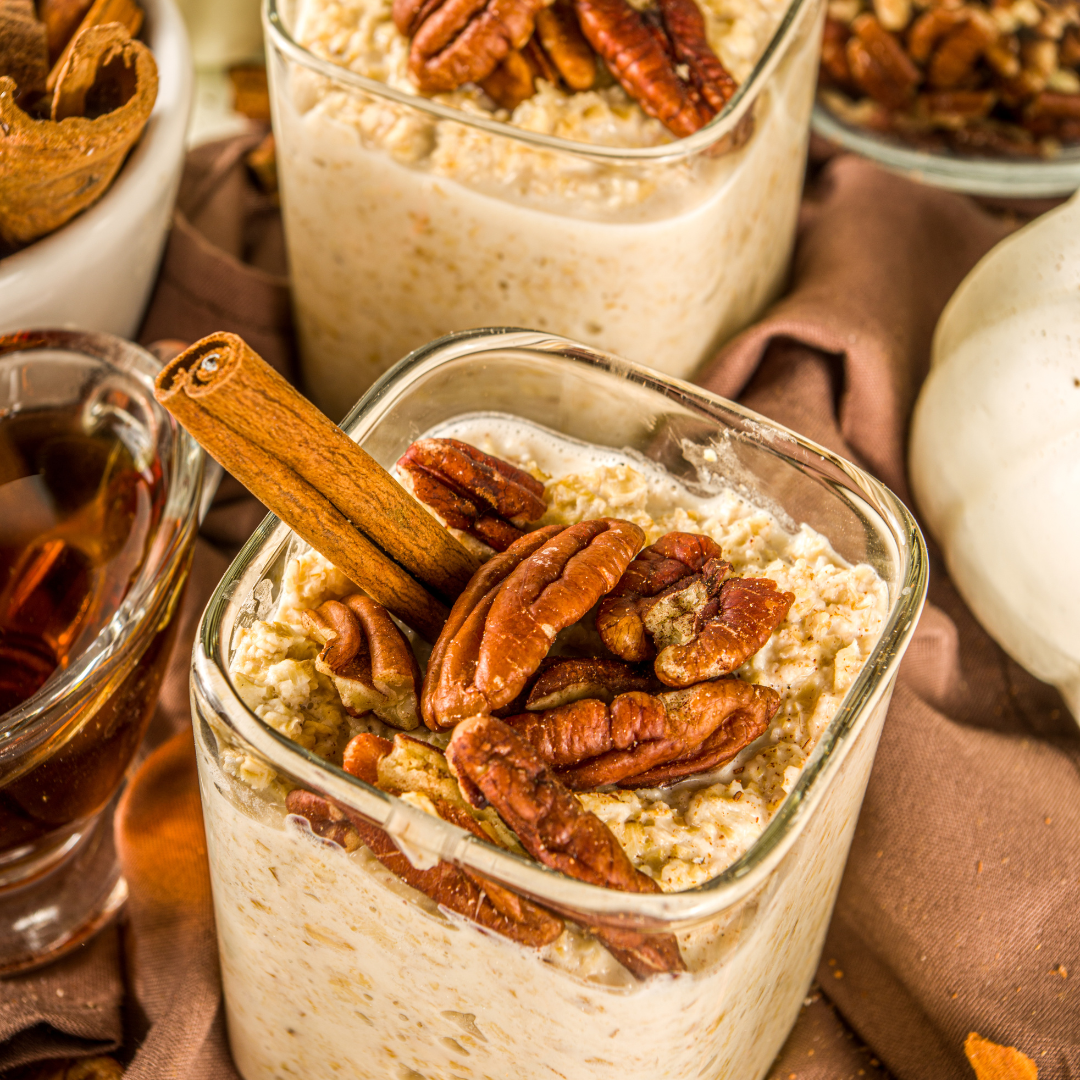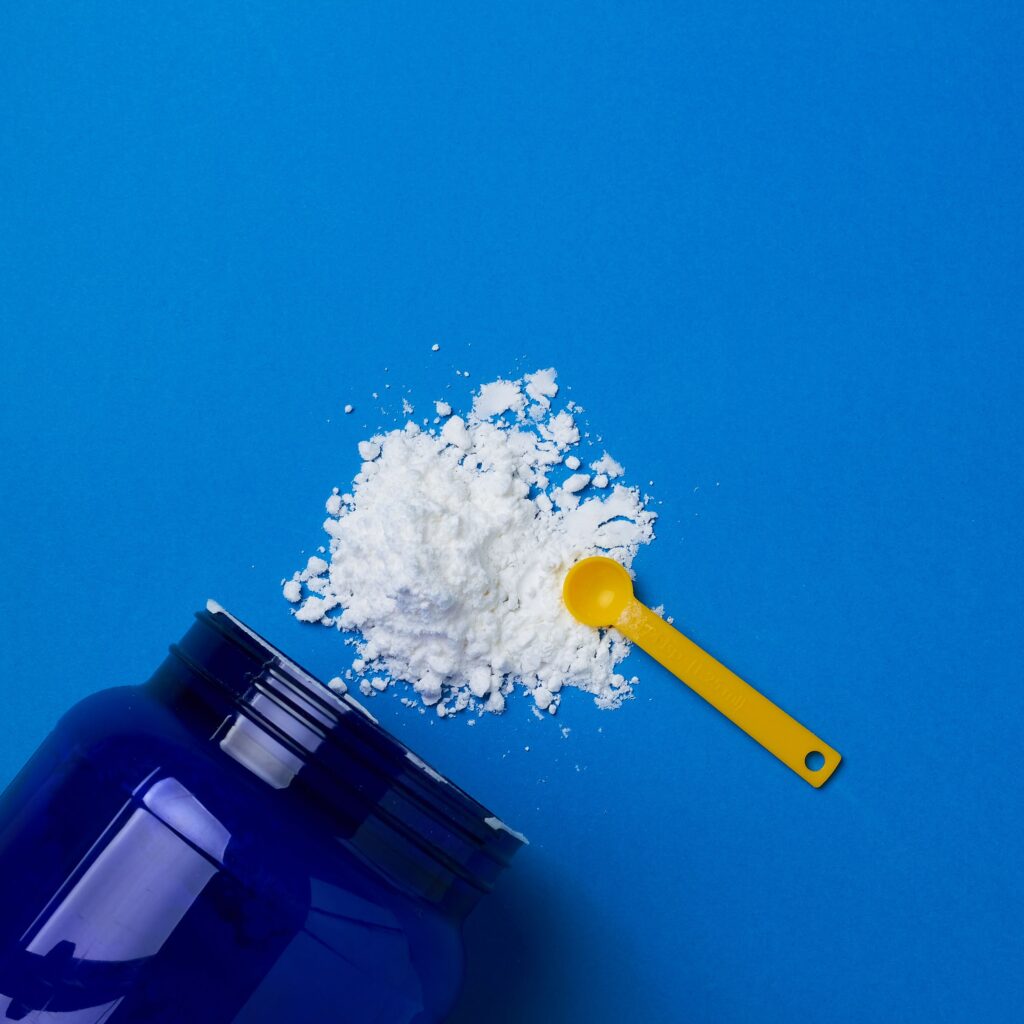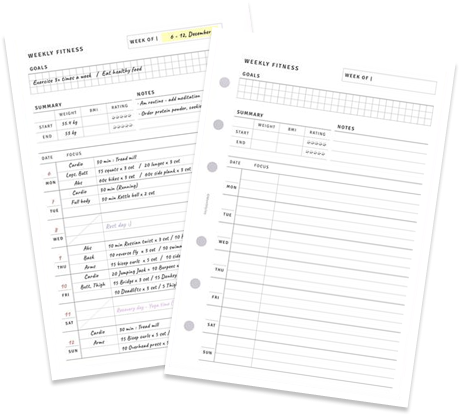What Is Fiber Maxxing — and Why Is It Trending?
You’ve probably seen the term “fibermaxxing” pop up on TikTok, Instagram, or in wellness headlines. At its core, it means intentionally increasing your fiber intake to improve digestion, energy, and metabolic health.
Unlike crash diets or detoxes, fibermaxxing is rooted in solid nutrition science, but, as is the case with all viral trends, it’s often oversimplified online. As a registered dietitian, I see the appeal and the pitfalls: yes, most people could benefit from more fiber, but “more” isn’t always “better.”
The Sad Truth: You are probably not eating enough fiber
Most people fall far short of the recommended 25 grams of fiber per day for women and 38 grams for men. In fact, the average American gets closer to 15 grams — about half of what our guts would prefer.
The viral fibermaxxing trend is an effort to close that gap, encouraging people to “maximize” their fiber intake and focus on foods that fuel a healthy gut and metabolism.
What are the rules?
There are no strict rules when it comes to fiber maxing. Some people focus on “maxxing” their fiber through whole foods like fruits, vegetables, legumes, and whole grains. Others rely more on supplements to reach their fiber goals.
For some, the goal is simply to meet the recommended intake. For others, it becomes a “more is better” challenge — which is where the nuance (and risks) come in.
What does the BodyFit Dietitian Think?
As a dietitian, I believe fibermaxxing can be a valuable tool when done gradually, intentionally, and with personalization. I love the idea of boosting fiber through real foods like beans, oats, berries, and lentils — not just powders or “gut sodas.”
I also believe in meeting your recommended intake, not exceeding it. Too much of a good thing can be a bad thing, people!
Why Fiber Deserves the Hype
Fiber might not sound glamorous, but it plays a powerful role in nearly every system of the body:
1. Cholesterol and Heart Health
Soluble fiber binds bile acids in the digestive tract, prompting the liver to use circulating cholesterol to replace them. This process can help lower LDL cholesterol and support heart health.
2. Blood Sugar and Insulin Regulation
By slowing glucose absorption, fiber reduces post-meal blood-sugar spikes and improves insulin sensitivity over time. This is key for energy stability, managing cravings, and supporting metabolic health.
3. Gut Microbiome and Colon Health
Fiber acts as fuel for your gut bacteria, which ferment it into short-chain fatty acids (like butyrate). These compounds reduce inflammation, strengthen the intestinal barrier, and promote overall digestive well-being.
4. Satiety and Weight Regulation
High-fiber meals are more filling and lower in calorie density, stimulating satiety hormones (PYY, GLP-1) that naturally help manage appetite.
5. Hormone and Estrogen Balance
During perimenopause and menopause, fiber can help excrete excess estrogen metabolites, supporting hormone balance and reducing symptoms like bloating or fluid retention.
Soluble vs. Insoluble Fiber: Why Both Matter
Not all fiber behaves the same way — and understanding the difference can help you get the most benefit (without the bloat).
| Type | Where It’s Found | What It Does |
|---|---|---|
| Soluble Fiber | Oats, beans, lentils, chia, flax, apples, citrus, psyllium | Dissolves in water to form a gel. Slows digestion, helps lower “bad” cholesterol, balances blood sugar, and feeds beneficial gut bacteria. |
| Insoluble Fiber | Wheat bran, vegetables, nuts, seeds, fruit and veggie skins, whole grains | Adds bulk and speeds up intestinal movement, helping prevent constipation and supporting regularity. |
The best approach? Aim for a mix of both every day. Soluble fiber supports your microbiome and heart health, while insoluble fiber keeps your digestion on schedule.
A Dietitian’s Caution: More Isn’t Always Better
As appealing as “fibermaxxing” sounds, your digestive system prefers gradual progress over extremes. Jumping from 5 to 40 grams of fiber overnight can lead to bloating, gas, cramping, or even constipation — especially if you’re not staying hydrated.
Potential downsides of over-maxxing:
- Gas, cramping, or GI discomfort from rapid increases
- Reduced absorption of certain minerals or medications
- Worsened symptoms for those with IBS, IBD, or SIBO
- Fatigue or heaviness from overly bulky meals
Think of fiber like resistance training for your gut: progress gradually, rest as needed, and listen to your body.
Who Shouldn’t Try Fibermaxxing?
Individuals with Irritable Bowel Syndrome (IBS), Ulcerative Colitis (UC), Crohn’s disease, or Small-Intestinal Bacterial Overgrowth (SIBO) should consult their healthcare provider or dietitian before making major dietary changes. For some, excessive fiber can aggravate symptoms rather than help.
How to Start Fibermaxxing the Smart Way
Here’s your step-by-step guide to increasing fiber without the discomfort:
- Assess your baseline: Track a few typical days to see your current intake.
- Add ~ 5 grams per week: until you reach your goal.
- Hydrate: For every 5 g of added fiber, add roughly 8–12 oz of water.
- Mix it up: Combine soluble (oats, beans, chia) and insoluble (leafy greens, bran, root veggies).
- Cook or soak: Pre-soaked oats or cooked beans are gentler on digestion.
- Rotate sources: Variety feeds different gut bacteria — lentils, berries, quinoa, veggies, nuts.
- Note symptoms: Back off slightly if bloating or discomfort persists.
- Supplements are optional: Fiber powders (psyllium, inulin) can help fill gaps, but prioritize food over supplements.
Pumpkin Protein Overnight Oats (Fiber-Maxxed Edition)


Ingredients
- 1/2 cup rolled oats
- 1 tablespoon chia or flax seeds
- 1/3 cup pumpkin purée
- 1/2 cup Greek Yogurt (Plain or Low-Sugar Vanilla)
- 1/2 cup milk (dairy or non-dairy)
- 2 teaspoons maple syrup
- 1/4 teaspoon cinnamon
- 1/2 teaspoon pumpkin pie spice
Method
- In a 16-oz jar or container, combine oats, chia seeds, and spices.
- Stir in pumpkin purée, yogurt, milk, and maple syrup until well mixed.
- Adjust sweetness or texture as desired (use ⅔ cup milk for thinner oats).
- Cover and refrigerate at least 4 hours or overnight.
- Stir and top with granola, nuts, or extra yogurt before serving.
Notes
Nutrition
Pumpkin Protein Overnight Oats (Fiber Maxxed Edition)
I was not gonna leave you hanging without a recipe, so that you can get started on your fiber journey! And because we’re in the thick of fall and all things pumpkin (by the way, pumpkin is a fiber-rich food!!), what better way than to kick things off with a cozy, pumpkin-spiced breakfast that’s as high in fiber as it is in flavor?
Plus, we’re all busy — which is why I love this one. These Pumpkin Protein Overnight Oats are meal-prep friendly, kid-approved, and make the perfect high-fiber breakfast for busy mornings. They’re also great for post-workout recovery, healthy fall meal prep, or anyone looking for an easy make-ahead breakfast that supports gut health, hormone balance, weight loss goals, and blood-sugar stability.
You can mix up a few jars on Sunday night and have grab-and-go breakfasts ready all week long. Packed with fiber, protein, and slow-burn carbs, this one checks all the boxes — and keeps you satisfied straight through your morning.
Ingredients
- ½ cup rolled oats (~5 grams of fiber)
- 1 tablespoon chia or flax seeds (~5 g fiber)
- ¼ teaspoon cinnamon
- ½ teaspoon pumpkin pie spice
- ⅓ cup pumpkin puree (~3 g fiber)
- ½ cup plain Greek yogurt, or low-sugar vanilla
- ½ cup milk, dairy or non-dairy
- 2 teaspoons maple syrup
Directions
- Combine dry ingredients: In a 16-ounce mason jar, bowl, or airtight container, add rolled oats, chia seeds, cinnamon, and pumpkin pie spice. Stir to mix.
- Add wet ingredients: Add the pumpkin purée, Greek yogurt, milk, maple syrup, and vanilla (if using). Stir until everything is well combined and no dry pockets remain.
- Adjust sweetness and texture: Taste and add extra maple syrup or spices if desired. For a thinner texture, use ⅔ cup of milk instead of ½ cup.
- Chill: Cover and refrigerate for at least 4 hours or overnight, allowing the oats and chia seeds to absorb the liquid and thicken.
- Serve: In the morning, give it a good stir and top with granola, extra Greek yogurt, chopped nuts, or your favorite toppings. Enjoy!
Notes
This recipe will create thick and creamy overnight oats. If you prefer a less thick texture, add 2/3 cup of milk instead of 1/2 cup.
The Bottom Line
Fiber maxxing isn’t about restriction — it’s about addition. Aiming for 25–35 grams of fiber per day from colorful, diverse foods can transform digestion, improve overall gut health, support weight loss and weight maintenance goals, stabilize blood sugar, and support hormone health — without the discomfort of overdoing it.
Start small, stay hydrated, and let your gut adapt at its own pace. Your microbiome (and your energy levels) will thank you!
Psst – Want More? Join the BodyFit Athletic Club Community
Want more high-fiber, protein-balanced recipes and evidence-based nutrition from a registered dietitian? Join us inside the BodyFit Athletic Club for weekly meal plans, Method (Balanced & Healthy) Plate visuals, and a community focused on nutrition by addition, not restriction.









